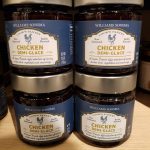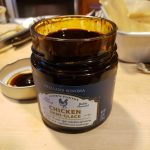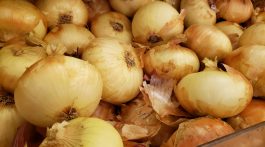The rich aroma of seared meat simmering in red wine and beef stock filled the house, the fragrant steam pushing away the blustery gusts that rattled the windows.
Marsha was cooking up a pot of her favorite Beef Stew with Root Vegetables. Following a recipe from thekitchn.com by Sheri Castle, she spent the afternoon browning, measuring, chopping and peeling.
Braising is a natural partner with cold weather. The winter-friendly technique warms you twice: once while it cooks and again at the table. It could be stew, pot roast, or even a ragout of vegetables. Beef is a favorite, but pork, lamb and chicken are all delicious after a long, slow simmer.
This recipe has a few wrinkles that make it particularly delicious.
Castle insists that the meat be well-seared. “Don’t rush this step,” she admonishes. “Deep browning is the bedrock of beef flavor.” She specifies cubes of beef chuck for the meat. Streaked with fat and connective tissue, the chuck isn’t attractive; but cooked slowly it becomes meltingly tender and richly flavored.
Instead of dicing the celery, carrots and onion for mirepoix, the instructions are to “finely chop” them. Marsha minced them in the food processor with a few pulses so that they would melt away in the gravy during the hours of cooking, leaving behind just their flavor.
As you would expect, the simmering liquid is a mix of tomato paste, beef stock (store bought is fine) and red wine. But then Castle pulls an ingredient out of left field.
To fortify the broth and add rich complex flavor she calls for three tablespoons of veal demi glace. What’s that?
Demi glace is an old-school French ingredient from the days of scratch kitchens with simmering stock pots. Made from a reduction of beef stock sometimes mixed with brown sauce, it’s intensely flavored, thick and glossy. Veal demi glace is the classic, but chicken and beef are also kitchen basics. It’s hard to find and even harder to make.
The complex days-long process of roasting bones and simmering vegetables for a brown stock and then further reducing the liquid to demi glace is beyond most home cooks.
European-trained chef Roland Olah is passionate about his stocks. At his South Norwalk restaurant, Bruxelles Brasserie, the stock pot is set to simmer overnight. Roasted veal bones are the base for his brown stock. Chicken and beef stock are always on hand too. “Without these stocks,” he told me, “I couldn’t produce my menu.” None are reduced to the level of demi glace, but with an almost 90% reduction to make the menu-favorite beef bourguignon, he comes pretty close.
 You can buy demi glace, just not easily. Like so many things, it’s available online. D’Artagnan, a source for high quality meat and meat products, sells their own brand, $10 for 7 ounces. More than Gourmet, a comprehensive source for sauce and flavoring ingredients, has a classic veal demi glace, 16 ounces for $35. But Marsha had no time for a delivered order.
You can buy demi glace, just not easily. Like so many things, it’s available online. D’Artagnan, a source for high quality meat and meat products, sells their own brand, $10 for 7 ounces. More than Gourmet, a comprehensive source for sauce and flavoring ingredients, has a classic veal demi glace, 16 ounces for $35. But Marsha had no time for a delivered order.
Williams Sonoma offers it on their website, 9.5 ounces for $30, and also at their stores. A quick trip to Westport would put us in business. Only chicken was in stock, but as far as the concentrated flavor of demi glace is concerned chicken isn’t that far off from veal.
Back at the stove, the thick, flavor-packed demi glace was spooned in to enrich the stew.
 Marsha’s favorite part of the stew is the root vegetables: carrots, potatoes, parsnips and rutabagas. When our 1840 house was built, the root cellar was as essential as refrigerators are today. Vegetables just like the ones in this stew would be kept cool and dry out of season for use all winter long. It’s this connection, plus their great color and flavor, that makes this recipe a favorite.
Marsha’s favorite part of the stew is the root vegetables: carrots, potatoes, parsnips and rutabagas. When our 1840 house was built, the root cellar was as essential as refrigerators are today. Vegetables just like the ones in this stew would be kept cool and dry out of season for use all winter long. It’s this connection, plus their great color and flavor, that makes this recipe a favorite.
While the meat simmers, the vegetables are peeled, diced and sliced. They go in the pot for the last 20 minutes of cooking.
Deeply flavored, glossy from the demi glace, and packed with vegetables and meat, the stew is a hearty meal – just the ticket for a cold winter night.
Frank Whitman can be reached at NotBreadAloneFW@gmail.com.












Sounds delicious! I just added More Than Gourmet Veal Demi Glacé to my next Amazon order! The next time I make this I’m going to try it.